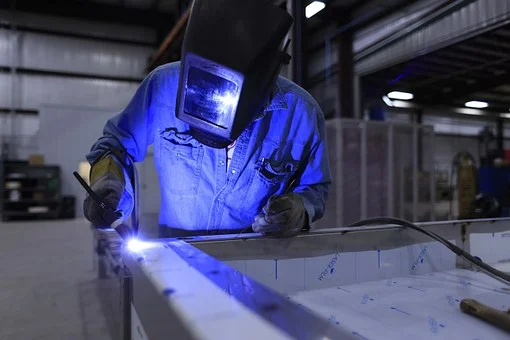6 Different Types of Welding Helmets
It’s true; a welding helmet is the ultimate means of protection to a welder’s face.
A welding helmet is an extension of a welder. No welder can start their job without wearing it. While this may sound obvious, not all helmets give resounding results. A helmet affects the welding process and experience.
No doubt about it- there are numerous types of welding helmet, and you mustn’t pick any.
Why?
Each welding helmet has unique features and specifications to enhance the welding process. That means they come in different sizes, shapes, controls, and diverse viewing areas. As such, they offer distinct advantages.
Manufacturers are getting creative. They combine various features to create a protective headgear that is comfier and effective. Nonetheless, all welding helmets must adhere to the National Safety Standards.
Contents [hide]
The 6 Welding Helmets
1. Auto-darkening welding helmets
The auto-darkening welder’s helmet has an automated lens. Typically, they detect light automatically once the sensor spots the light. They then adjust the lens accordingly to allow comfortable viewing. Surprisingly, even when an arc is inactive, these helmets can still protect your vision.
Initially, welders would manually adjust the lens while welding. The process was a big distraction; hence, it affected the efficiency of welding. The result; reduced productivity.
The automated darken filter eliminates the constant manual adjustments. Hence, higher productivity.
2. Passive welding helmets
Passive welding helmets are the most common welding helmets, probably because it is the most affordable. Nevertheless, it features solid construction.
Thus, it can withstand the daily abuses of a welder without bowing to pressure. It’ll protect you from UV, extreme heat, and flying objects while welding.
It looks simple – no fancy features of modern helmets. However, it delivers good results since it meets the criteria of national safety standards.
If you are working on a shoestring, buy this helmet.
3. The battery-powered welding helmet
Battery-powered helmets use li-ion battery – rechargeable or replaceable. The majority of shops sell Lithium-ion batteries. So no hassles about getting them.
These helmets are the best welding helmet option for welders who have massive projects and are keen on completing them quickly. It is easier to replace the batteries.
The significant advantage of these welding helmets is that you can start using them immediately, provided the battery is fully charged. If your helmet uses replaceable batteries, it is essential to have spare batteries, just in case they run out along the way.
Battery-powered helmets are more convenient as compared to solar-powered helmets because you can use them anywhere.
4. Solar-powered welding helmets
Solar-powered helmets are gaining traction in the welding field. They are an excellent option if you are taking an outdoor welding project. However, charge the helmet fully
before you use it.
Leave the helmet in the sun for a few hours, on the day you aren’t using it. When you charge them accurately, they’ll last for hours. So you need not worry about the rate at which they drain power.
The advantage of solar-powered helmets is they eliminate the expense of buying replacement batteries or the recharging. For this reason, they are a low-cost option. Thus, they’ll save you money in the long run.
However, they can inconvenience you if you forget to charge them.
Keep in mind that technology is ever advancing. Currently, some helmets use both battery and solar power. Solar and battery-powered helmets bring much convenience and can make the welding process even much easier.
When the solar power drains, the battery power steps in. This way, you continue with your welding. Such welding helmets are the best welding helmet for people doing underwater welding jobs.
5. Welding helmets with Fixed Shade Lenses
The fixed shade welding helmets are suitable if you are welding standard type of material. They lack an auto-darkening filter; thus, they will not adjust to a different level of brightness of the arc.
As a welder, you need to work with standard voltage and material to cushion your eyes from bright light. Normally, welding helmets with fixed shade lenses come with a shade 10 lens. However, some have shade 12 lens.
6. Welding helmets with Variable Shade Lenses
The variable shade lens helmet is a versatile option. It can adjust to a variety of welding methods. Similarly, you can weld multiple types of materials without negatively affecting your eyes.
That means you can switch between projects simultaneously. And also, you can join different kinds of metals without eye strain.
Choosing these helmets means you want flexibility. They save on the cost and hassles of replacing the helmet lens.


